Extreme heat and hailstorms are on the rise in Australia’s prime agricultural areas. Beleaguered rural communities are under pressure to deliver sustainable produce to market both in Australia and for export, in the most challenging conditions. To date, utility-scale PV has often been seen as the latest blackberry thorn in the side of farming. But could solar add its renewable-energy cred and physical shelter to enhance growing methods and conditions for pears and lambs alike?
It’s a new perspective on agrivoltaics, which has often been focused on the benefits to solar generation of growing dust-minimising, cell-cooling green crops under panels. This revised equation features more mutual back scratching.
“There’s no doubt that Australia is going to see more in the way of protective cropping and farming,” says Angela Avery, Research Director of Agriculture Resources Sciences in Victoria. “And I don’t just mean tomatoes growing in large glasshouses, It’s going to be much bigger and much more broadacre than that. The main driver will be the reliability of getting quality food in a sustainable way into supply chains that have quite strict requirements, and I think agrivoltaics has a really important role to play.”
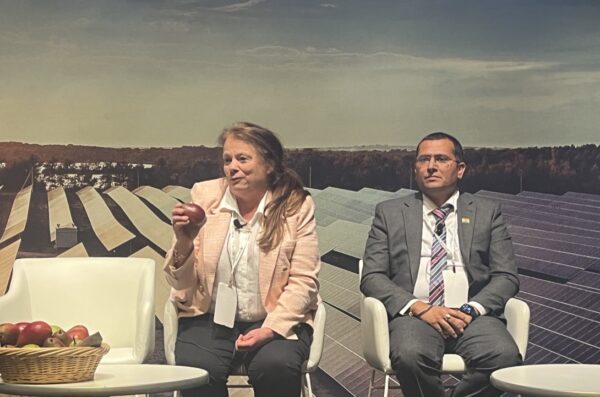
Image: pv magazine/Natalie Filatoff
At All-Energy Australia 2023, Avery was one of the panelists in a session titled Mapping developments in agri-solar. Luke Osborne, Managing Director of Stride Renewables, an advisory firm to renewable energy and would-be sustainable enterprises, chaired the session.
The importance of preserving agricultural land use
From a multigenerational farming family near Bungendore in New South Wales, Osborne also has skin in the game (more later), and predicted that near future solar developments would have to produce an agri-solar strategy as part of their approval process. “It will be part of the conditions of consent, because people don’t want to see agricultural land sterilised [to make way for solar farms].”
He says even though Australia won’t need a high percentage of its agricultural land for renewable generation – “even for solar to achieve a hydrogen-super-power future” – it is still extremely important to rural communities “that they see agricultural production continue.”
Call it agri-solar, agrivoltaics, mixed land use … it’s all the same, right? No. Panellists agreed that because the concept is so new, it will be important to clearly define it and what it means, and what the priorities are, to instill confidence in potential investors as well as the farming community.

Image: CSIRO
“We’re working with Macquarie University, reviewing strategic areas around standards and partnerships, and definitions around what agrivoltaics are in Australia, because we’ve seen that clear definitions really supported the development of agrivoltaics in Germany,” says Avery.
Sunlight, shelter and the perfect pear
Avery conducts research at Agriculture Victoria’s SmartFarms. 90% of Australia’s pears are grown in Victoria, with a concentration of orchards in the Goulburn Valley, where hail netting is becoming an increasingly common sight. Avery says that in May this year 470 hectares of perennial tree crops were under netting, and that coverage has since increased.
At Tatura, in the heart of pear-growing country, she is two years in to a study into the benefits of growing pears under solar arrays. Results so far have been mixed, but there are still plenty of levers to pull. The point at this stage is to be methodical over time — “with agriculture, it’s important to have three years of data, because of the seasonal differences,” she says.
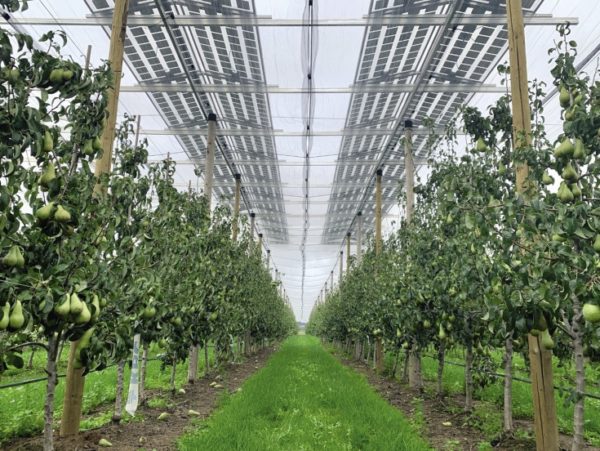
Image: KU Leuven
The Tatura SmartFarm has 120 solar panels with half fixed at 5 degrees west and half at 45 degrees west over an established orchard growing a red-blush variety of pears. A control group of trees has no solar-panel protection. The scientists record a wide variety of data, related to crop yield, pear size, colour, quality, and energy yield.
By measuring sap flow and water content in the soil and air under the panels, “we’ve found that agrivoltaic systems certainly maximise water use and improve water efficiencies, particularly in terms of yield per unit of transpiration”, says Avery. That’s a big and important win as Australia heads into an El Nino weather period, during which drought is highly likely, and the cost of water will rise.
The pears under panels have also been largely protected from sunburn (which starts to affect fruit quality when temperatures exceed 30 degrees Celsius), and from the pelting of hailstorms experienced in the region, which can make fruit unsaleable.
But other factors such as pear production have seen a decline under panels, with a 37% reduction in yield under the 45 degree west orientation, and 47% reduction under the panels at five degrees west. Many of the pears under panels have not received enough sunlight to inspire the rosy blush that so appeals to consumers.
Taking a fresh look at PV design to optimise crop yield
But Avery is optimistic that system design and material adjustments can optimise conditions for the pears — she mentions using solar panel trackers to optimise for energy and pear production, the potential for translucent or transparent solar panels to allow more light through to crops below, and integrating pear trellising with solar pillars to reduce costs.
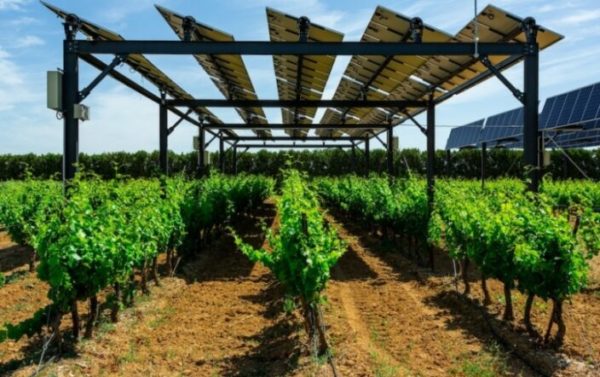
“We have an NDA with the Fraunhofer Institute in Germany, to investigate some new materials coming in, and the opportunities for Australia,” she says. “We want to continue to measure and monitor microclimate and particularly different opportunities around soil and soil moisture under commercial solar farms. And we think the opportunity around digital twins linked to both energy and biophysical crop growth models will provide some real opportunities to design systems of the future.” Developing dwarf varieties and pears that blush under less intense sunlight are also possibilities.
Avery is also involved with setting up an experiment on the benefits of farming lambs under solar panels at Agriculture Victoria’s Hamilton SmartFarm: “We want to get empirical data around how these systems could potentially help lamb production and particularly lamb survival,” she says.
Sheltering animals from harsher climatic conditions
Enhanced lamb farming is the business Osborne has been working on at his cousin Dominic Osborne’s property near Bungendore on the NSW Southern Tablelands.
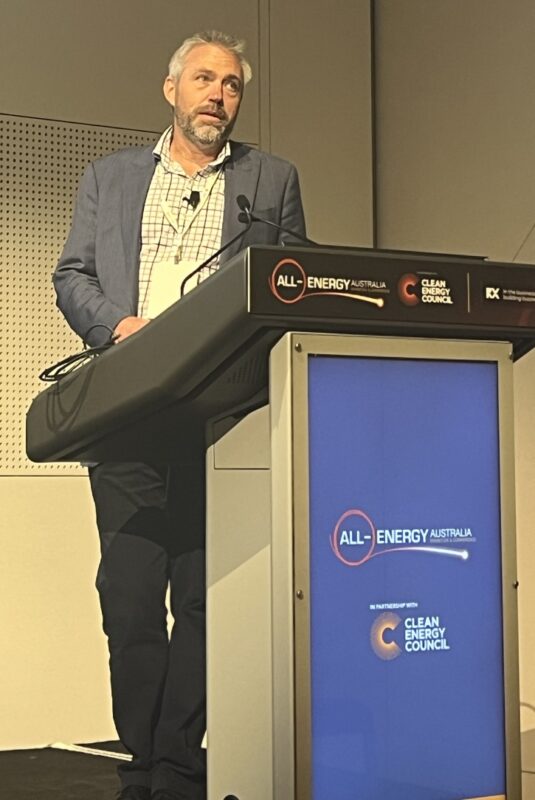
Image: pv magazine/Natalie Filatoff
The proposed 350MWac PV installation and 300 MW / 600 MWh battery is known as Blind Creek Solar Farm and received planning approval as a NSW state significant project in July this year. It will now be development as a joint venture between developer Octopus Australia and the Clean Energy Finance Corporation. Blind Creek is in fact a reenvisioning of Infigen Energy’s 50 MW Capital Solar farm, for which land agreements had lapsed; among the changes made is it has been relocated to degraded farm country more removed from farm neighbours.
The solar installation will co-exist with lamb production, a soil-carbon project, a green-waste humus compost facility and regenerative agriculture processes; and will be accompanied by works to improve the biodiversity and water-holding capacity of the catchment.
Critical to the project is the growing of pasture under the 600 hectares of solar panels. To maintain pasture in its most productive, green but reasonably close cropped phase, the sheep will be moved through different sections of the solar farm so that it never becomes over-grazed or overgrown — they’ll be deployed as living lawn mowers.
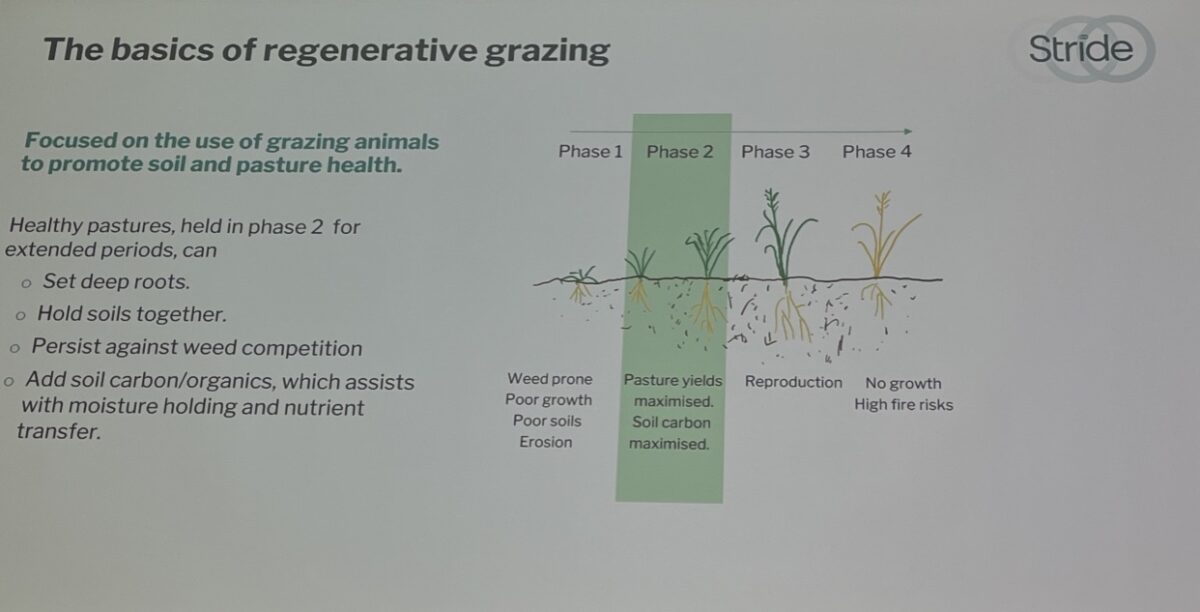
Image: pv magazine/Natalie Filatoff
So far, the positives of this farmer-led multi-faceted project include being able to engage “with our community as locals,” says Osborne. His cousins Dominic and Jane, “come with trust embedded in what they do, and that’s so much more powerful than people from outside the community coming and telling people in rural areas how to live their lives.”
Importantly, Osborne as joint MD of Stride Renewables, and coming from a farming family, highlights some challenges for other agrivoltaic developers to consider:
1) Contracting
Solar farms are expensive — Blind Creek is expected to cost $450 million (USD 285 million) to develop. Osborne says one issue still to be resolved is “How do you make sure that the agricultural system doesn’t become the poor cousin, and is left out when you’re trying to get your project to financial closure with banks, EPC contractors and so forth?” Although, ultimately, he says, “solar panels are worth a lot more than the lambs.”
Stride’s approach was to create an “equity solar strategy,” setting out governing principles and responsibilities of each side — agriculture and renewable energy generation — of the business, because, he says, “Things do go wrong. We do have droughts, and other situations where one of these systems needs to take precedence over the other.”
2) Design
Careful consideration of numerous factors is vital prior to design of the solar farm and construction. Osborne says, “It’s very difficult to retrofit any of this, even adding a fenceline into an existing solar array is almost impossible, so very careful thought about the whole of the agricultural production system is advisable before you put the capital down to build it.”
Blind Creek uses two panels in portrait on its trackers where most trackers in Australia are one one panel portrait. “Two-P means the tables are naturally higher off the ground, which gives you more space underneath them. And they’re naturally further apart, which also gives you more opportunity to bring agricultural equipment down between the tables,” says Osborne, who adds, “but they’re not typically used because there’s not a lot of trust in the industry for those systems which have higher wind loading and so forth.”
Spacing between the tables will also be influenced by how much sunlight is needed at ground level for crops or pasture to grow well.
3) Bushfire management
Any development application includes a bushfire management plan, which Osborne says, “usually calls for you to have the grass mown right down to the ground in bushfire season, which is inconsistent with agricultural systems. We’d like to develop a more flexible approach to bushfire risk management. It’s a live issue.”
This content is protected by copyright and may not be reused. If you want to cooperate with us and would like to reuse some of our content, please contact: editors@pv-magazine.com.
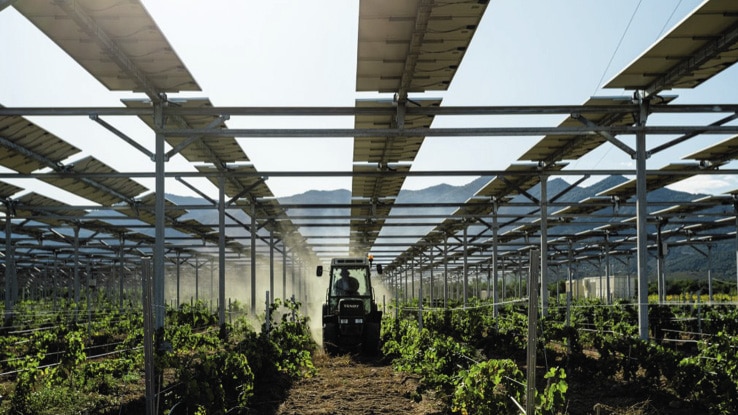








By submitting this form you agree to pv magazine using your data for the purposes of publishing your comment.
Your personal data will only be disclosed or otherwise transmitted to third parties for the purposes of spam filtering or if this is necessary for technical maintenance of the website. Any other transfer to third parties will not take place unless this is justified on the basis of applicable data protection regulations or if pv magazine is legally obliged to do so.
You may revoke this consent at any time with effect for the future, in which case your personal data will be deleted immediately. Otherwise, your data will be deleted if pv magazine has processed your request or the purpose of data storage is fulfilled.
Further information on data privacy can be found in our Data Protection Policy.